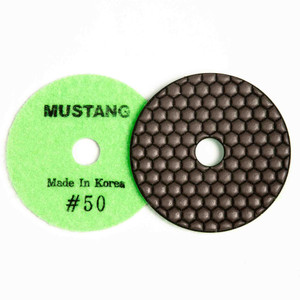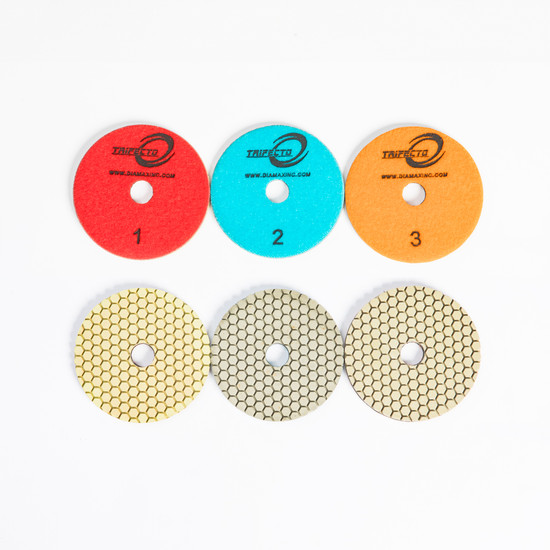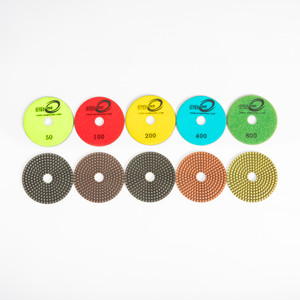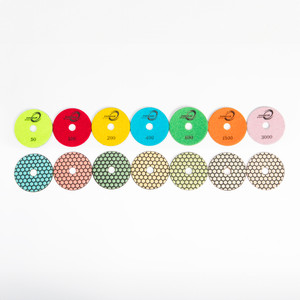
Unlock unparalleled efficiency with the 4IN TRIFECTO WET/DRY POLISHING PAD by Diamax. This innovative polishing pad is specifically engineered for granite, marble, and engineered stone, making it an essential tool for stone fabricators and countertop installers who demand the highest quality finishes in their work.
Designed to reduce polishing time by an impressive 40% to 50%, the TRIFECTO system achieves a high-gloss result comparable to a full polishing system but in half the time. For optimal results, use all three steps wet—starting with the 120 grit pad and adding water for enhanced performance. Experience the efficiency and quality that professionals trust.
Key Features
- 3-step polishing system for superior finish
- Compatible with granite, marble, and engineered stone (wet use only on engineered stone)
- Reduces polishing time by 40% to 50%
- Achieves high gloss in half the time of traditional methods
- Max RPM of 4,000 for fast and efficient polishing
Who Is This For?
This polishing pad is ideal for professional tile and stone fabricators, countertop installers, and stone masons who require top-notch results and efficiency in their projects. Perfect for industrial fabrication shops looking to enhance productivity without compromising on quality.
Frequently Asked Questions
Can this pad be used dry?
Yes, the TRIFECTO pad can be used dry, but for best results, it is recommended to use all three steps wet.
What is the maximum RPM for this polishing pad?
The maximum RPM for the 4IN TRIFECTO polishing pad is 4,000.
What grit does this pad start with?
The polishing process begins with a 120 grit pad for effective material removal.
Is it safe to use on engineered stone?
Yes, but it is crucial to use the pad wet when working with engineered stone to avoid damage.
How much time can I save using this polishing system?
You can save 40% to 50% of your polishing time compared to traditional methods.





